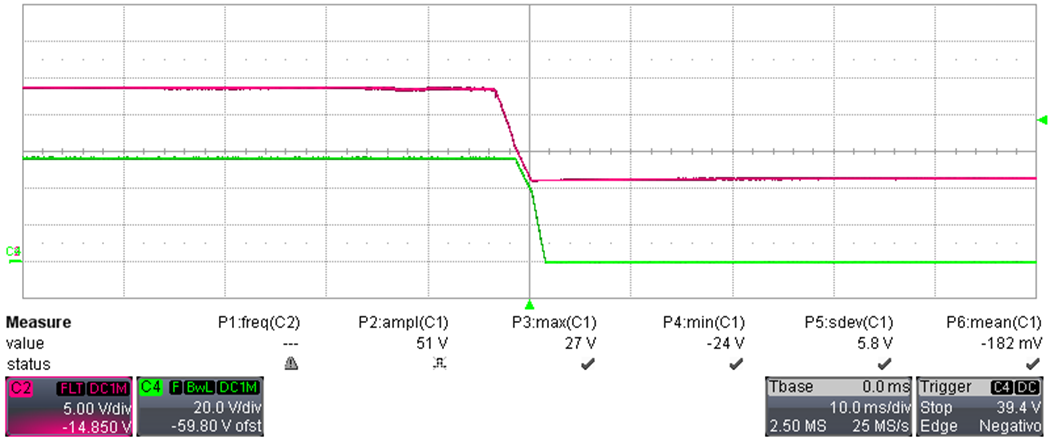TIDT308 October 2022
3.5 Shutdown Sequence
The output voltage has been measured by switching off the DC voltage source while the load was set to 2.5 A and VIN to 24 VDC
 Figure 3-11 Shutdown Sequence
Figure 3-11 Shutdown Sequence- Channel C2: Input voltage (5 V/ div, 10 ms /div, DC coupling, 20-MHz BWL)
- Channel C4: Output voltage (20 V / div, DC coupling, 20-MHz BWL)